Nathalie left in the wee hours of the morning for a meeting in Dublin, so I slept in for a bit before heading out for a full day of sightseeing in Derry.
The friendly concierge at our hotel, Ramada Da Vinci, gave me a great tip to do the walking tour of Derry, the fourth largest city of Ireland. I didn’t know much about Derry before arriving, in fact, I’ve never even heard of it.
Derry is a city with a long history of strife and war. It struggles to find its identity between its English Protestant and Irish Catholic roots. Examples of the struggle are apparent everywhere. For example, the city is officially named Londonderry (loyalists prefer this name), but it is well known as Derry and even road signs and maps support the simplification. Also known as the “Maiden City” since it withstood the siege in the 17th century. Throughout my day touring I found many other examples.
However the city seems to be changing as if it wanted to put its differences aside and become something great. There were posters everywhere for Derry being designated the UK City of Culture in 2013. The slogan was (no joke) Legen-DERRY! It makes you cringe but you gotta love it… Apparently this is a new initiative started in 2009 which gave one UK city the honor every four years and provided the awarded city a social and economical boost.
So I decided to walk into the center and the hotel even provided me with an umbrella to cope with the first full day of rain I’ve had all trip. The walk took around 15 minutes.
Peace Bridge
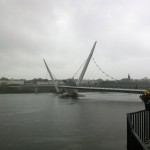 The first site that rose in the distance was the Peace Bridge. It is a new pedestrian bridge completed in June 2011. It is significant because it connects and “bridges” the loyalist East Derry with the nationalist West Derry across the River Foyle.
The first site that rose in the distance was the Peace Bridge. It is a new pedestrian bridge completed in June 2011. It is significant because it connects and “bridges” the loyalist East Derry with the nationalist West Derry across the River Foyle.
Guildhall
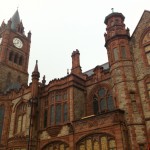 The Guildhall is right off the road from the bridge and has been used for City Council meetings. It was built in 1890 and was (surprise) bombed several times. In 1972 it was severely damaged by two bombs and it cost over £1.7m to restore.
The Guildhall is right off the road from the bridge and has been used for City Council meetings. It was built in 1890 and was (surprise) bombed several times. In 1972 it was severely damaged by two bombs and it cost over £1.7m to restore.
Walking into the walled center, I stopped for a Guinness at The River Inn before continuing through the drizzle to the Foyleside Shopping Centre where the walking tour was meeting.
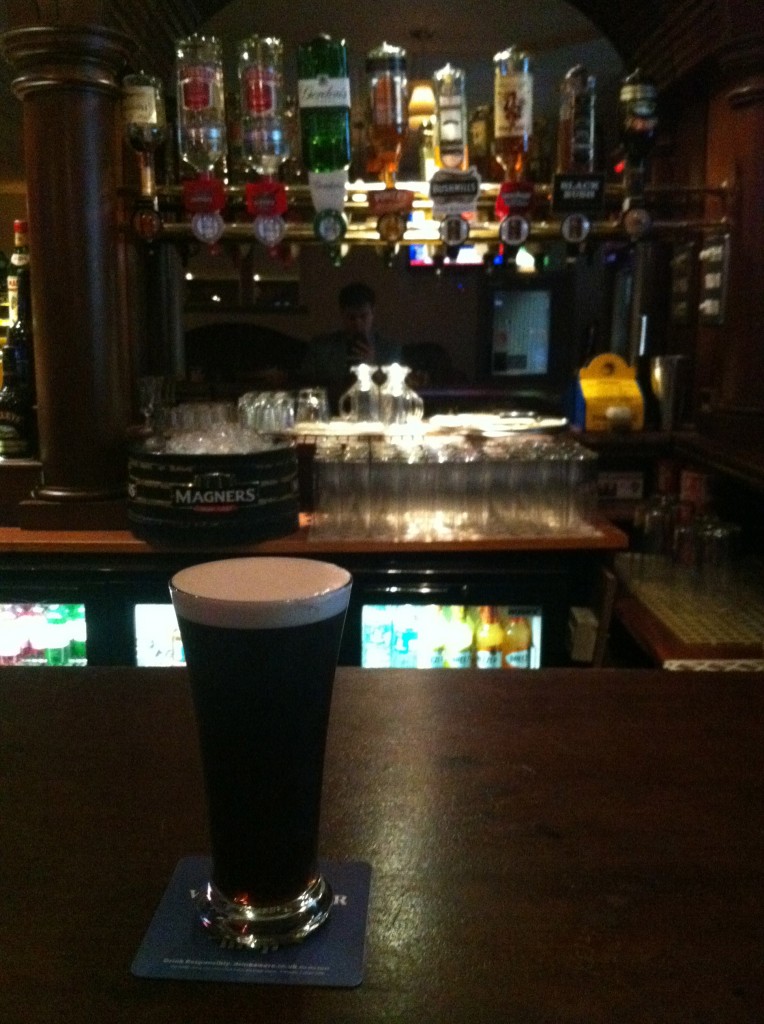
Martin McCrossan Award Wining City Tours
 The tour group was mostly elderly couples from the UK and Ireland. I was the only under 50 and Asian looking participant. We walked along the city walls as our very informed and jolly guide gave us the history of Derry, the Troubles, and the buildings we walked passed. He also shared some stories and lore throughout the tour. Unfortunately with our large group, the rain, and his accent, I couldn’t understand or hear everything he said. However it was a great tour and only cost £4 with a coffee included at the end of the tour. I highly recommend it!
The tour group was mostly elderly couples from the UK and Ireland. I was the only under 50 and Asian looking participant. We walked along the city walls as our very informed and jolly guide gave us the history of Derry, the Troubles, and the buildings we walked passed. He also shared some stories and lore throughout the tour. Unfortunately with our large group, the rain, and his accent, I couldn’t understand or hear everything he said. However it was a great tour and only cost £4 with a coffee included at the end of the tour. I highly recommend it!
St. Columb’s Cathedral
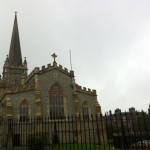 The current Gothic church was completed in 1633. The original one was destroyed by an accidental explosion when it was used to store gunpowder. The bricks from the church were then used for the walls of the city. This cathedral holds services for the Church of Ireland.
The current Gothic church was completed in 1633. The original one was destroyed by an accidental explosion when it was used to store gunpowder. The bricks from the church were then used for the walls of the city. This cathedral holds services for the Church of Ireland.
We walked passed St. Augustine’s Church and the Courthouse. On the corners of the walls there were original large cannons on display. At one point when we were looking down at the Bogside, we were told of Bloody Sunday and imagined the scene unfolding of soldiers shooting down into the protesters.
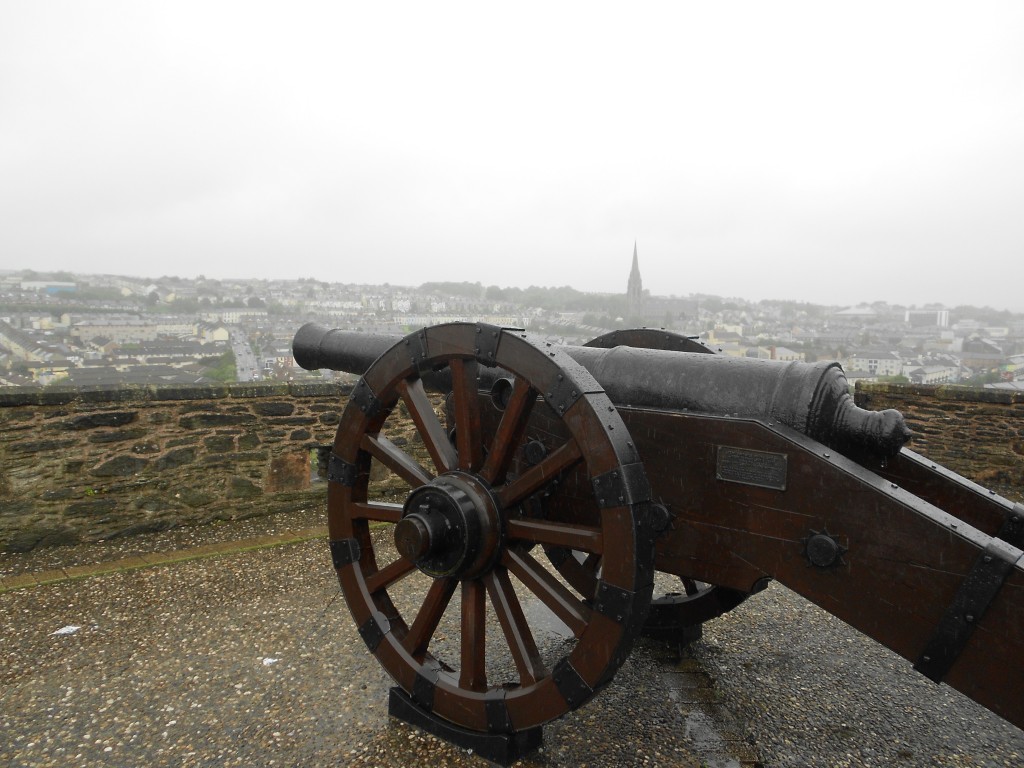
The Apprentice Boys Memorial Hall
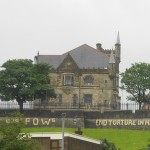 This memorial is in honor of the 13 apprentices that closed the gates against King James during a siege of the city in 1688. This is when their famous phrase of “no surrender” was used in response to the King’s threat of “Surrender or Die!”
This memorial is in honor of the 13 apprentices that closed the gates against King James during a siege of the city in 1688. This is when their famous phrase of “no surrender” was used in response to the King’s threat of “Surrender or Die!”
The hall was built in 1877 and now serves as the headquarters of the Apprentice Boys of Derry, a Protestant fraternity with over 80,000 members worldwide. Every new member must be initiated in this hall. Nearby is the Walkers Plinth a pillar originally completed in 1826 and famous for the location of the burning of the effigy of Colonel Lundy (the traitorous cowardly governor during the siege). In 1973 it was destroyed by an IRA bomb. What a surprise. Then the plinth was rebuilt for the three 300th anniversary of the siege.
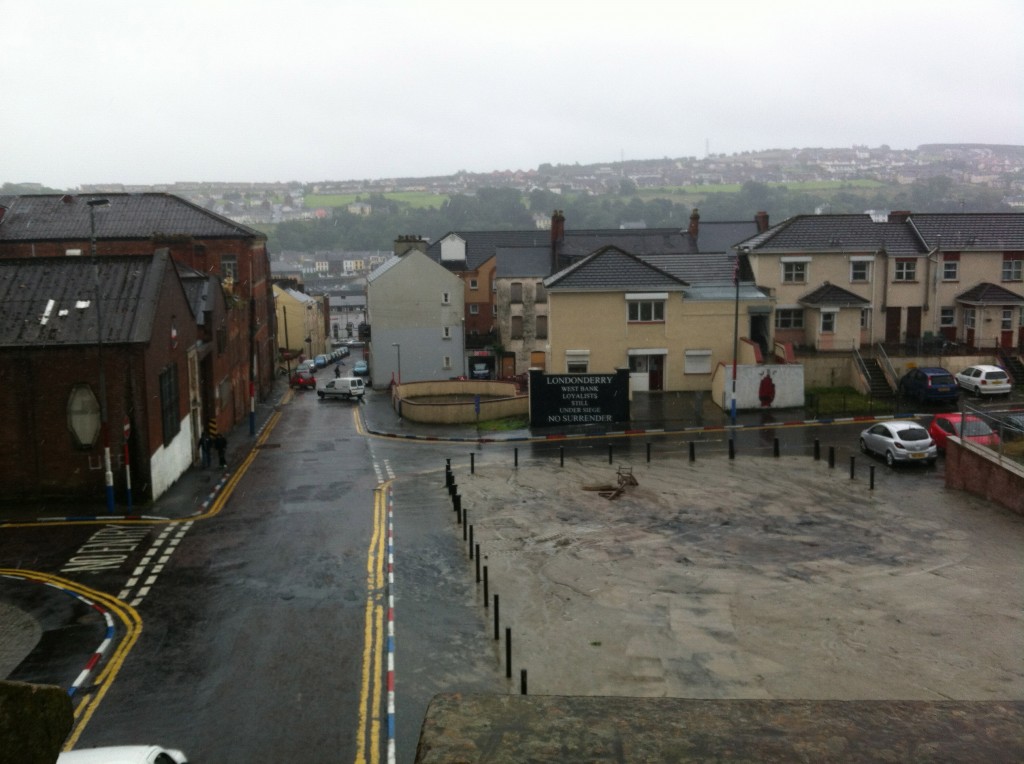
The tour continued off the wall and into the center of the walled section of the city.
Diamond War Memorial
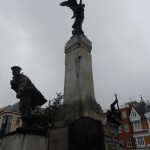 In the very center of the center is a WWI memorial for those from Derry that lost their lives. The three bronze statues represent Victory in the center the Army (statue of a soldier) and the Navy (statue of a sailor).
In the very center of the center is a WWI memorial for those from Derry that lost their lives. The three bronze statues represent Victory in the center the Army (statue of a soldier) and the Navy (statue of a sailor).
Austins Store
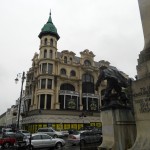 This department store in the center was founded in 1830 and apparently is the world’s oldest independent department store. The external Edwardian architecture is quite fitting for the square. The inside was not very impressive with cheap carpeting covering the old wooden stairs and since it was an old building the store was a bit difficult to navigate through its five levels.
This department store in the center was founded in 1830 and apparently is the world’s oldest independent department store. The external Edwardian architecture is quite fitting for the square. The inside was not very impressive with cheap carpeting covering the old wooden stairs and since it was an old building the store was a bit difficult to navigate through its five levels.
The walking tour ended at the gate where we started. From there I grabbed a coffee at the corner café, then walked to the northeast corner of the wall.
Tower Museum
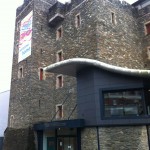 I allocated a bit of time to go through this museum which is located in O’Doherty Tower. Opened in 1992, the museum showcases Derry’s history (much of what I already heard on the tour) and a shipwreck, La Trinidad Valencera. The shipwreck was an unexpected but a very interesting exhibit. In the 80s, the Derry Sub Aqua Club found this Spanish wreck from 1588. Throughout the exhibit is the process of excavating the remains and what they dug up. One of the last displays is a cannon in almost original condition (being preserved by the sand).
I allocated a bit of time to go through this museum which is located in O’Doherty Tower. Opened in 1992, the museum showcases Derry’s history (much of what I already heard on the tour) and a shipwreck, La Trinidad Valencera. The shipwreck was an unexpected but a very interesting exhibit. In the 80s, the Derry Sub Aqua Club found this Spanish wreck from 1588. Throughout the exhibit is the process of excavating the remains and what they dug up. One of the last displays is a cannon in almost original condition (being preserved by the sand).
After the museum, I walked along the wall and exited from the north gate.
Bogside
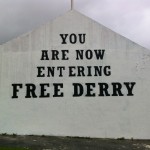 From there I walked down to the Bogside where the murals of oppression and rebellion decorate the district walls. I had a strange feeling walking around, as if all the locals knew something I didn’t… I walked to the Free Derry Corner, the center of much of the past conflict.
From there I walked down to the Bogside where the murals of oppression and rebellion decorate the district walls. I had a strange feeling walking around, as if all the locals knew something I didn’t… I walked to the Free Derry Corner, the center of much of the past conflict.
In 1969, the Battle of the Bogside took place, which was a large riot of the residents of the Bogside (Republicans) against the Royal Ulster Constabulary (RUC), basically the police force at the time. This started in response the RUC breaking up a Bogside protest against the Apprentice Boys parading the walls. This was the spark for widespread violence throughout Northern Ireland and many say the start of The Troubles.
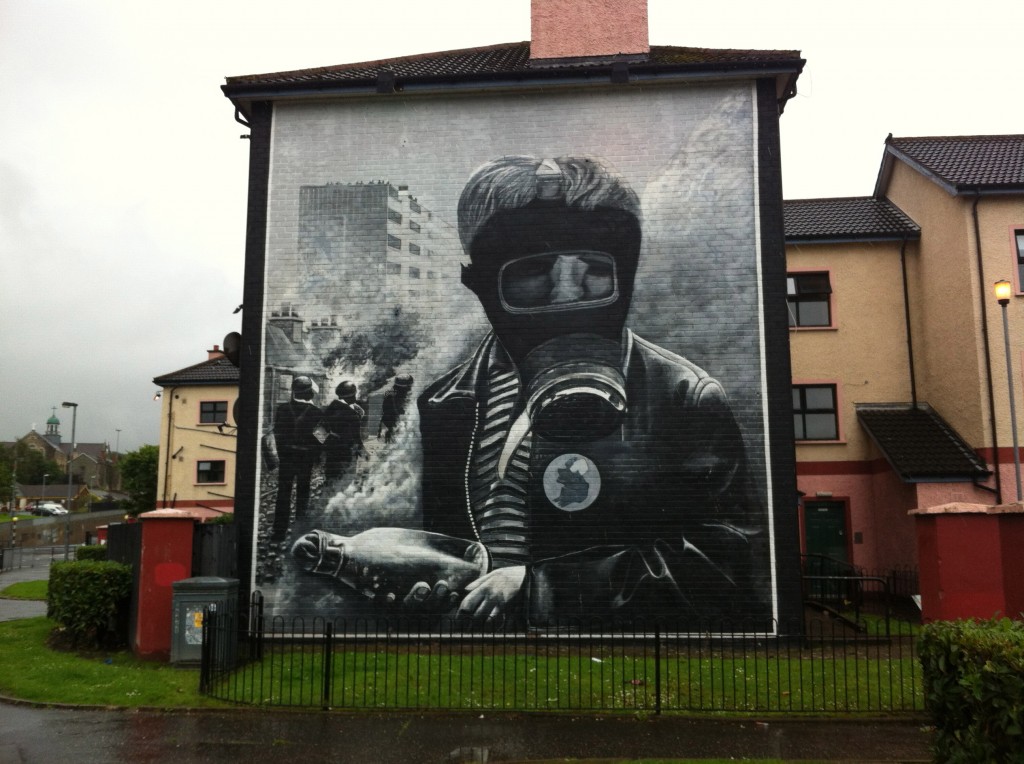
In 1972, Bloody Sunday occurred in this square. During a Northern Ireland Civil Rights Association march, British soldiers fired 100+ rounds and hit 26 unarmed protesters and bystanders. 13 died immediately and one man 4 months later. They were given the authority to use live ammunition, but the “massacre” as its also known, was unprovoked and very controversial.
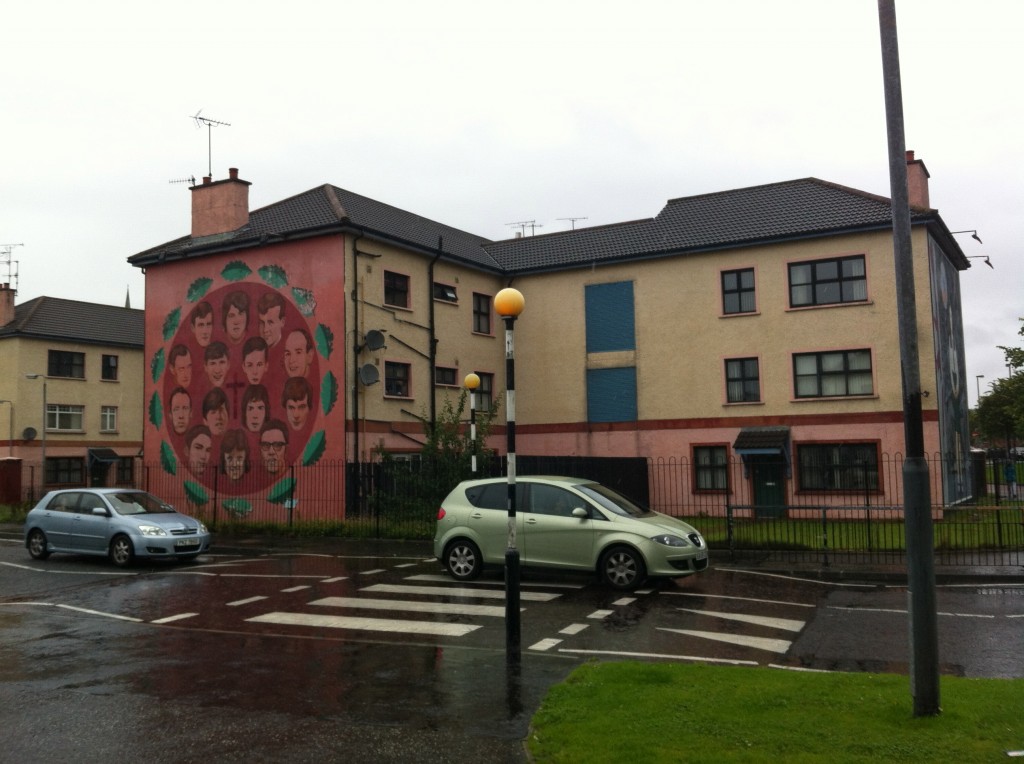
The square also has a memorial for the 1981 hunger strikers and one for those who died serving Derry’s Provisional IRA.
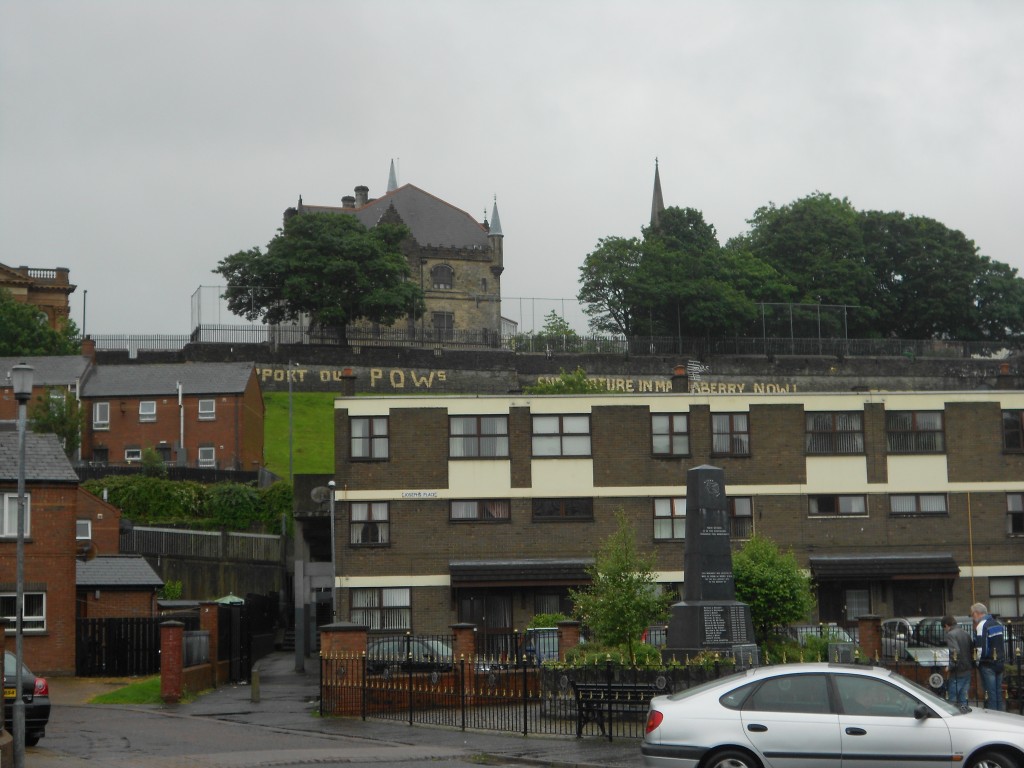
Looking up at the city walls, it was easy to imagine how one would feel inferior and oppressed from those living in the high and protected walled city. I saw the aftermath of where several “paint bombs” thrown at the walls and different buildings.
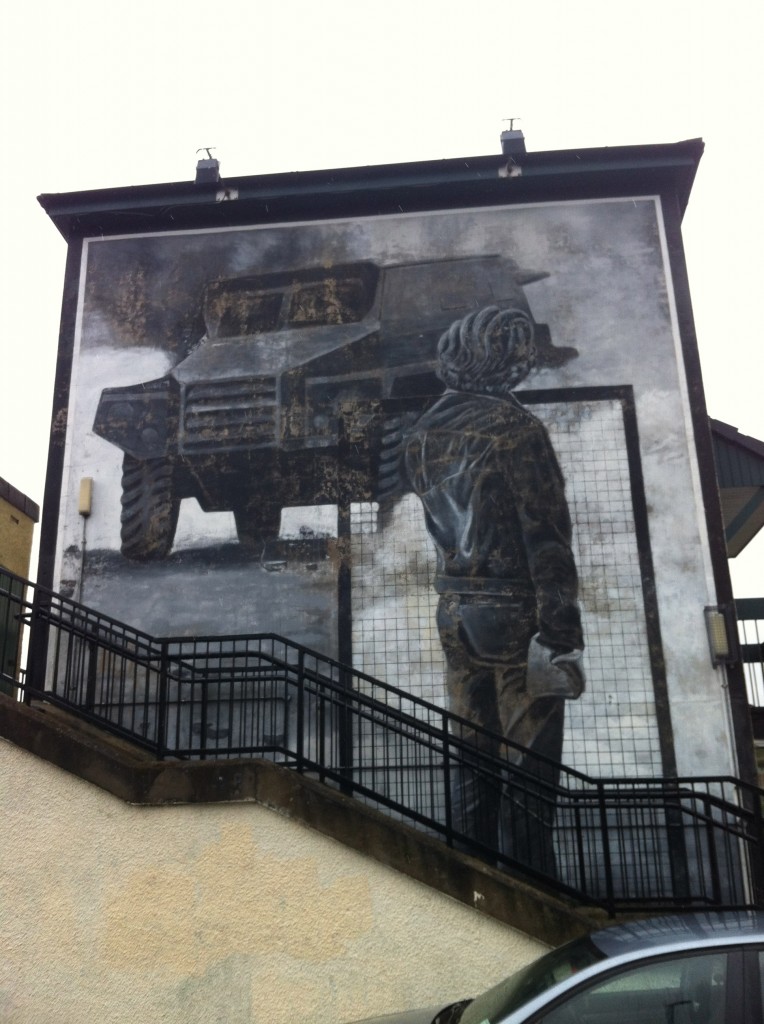
I took some pictures of the fascinating wall art. Many of the murals were painted by the artists Tom Kelly, William Kelly, and Kevin Hasson, better known as The Bogside Artists.
Museum of Free Derry
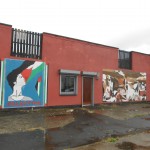 I stopped by the small museum which chronicles the history of the Bogside and the turmoil of the area during the Troubles. Though small, its worth checking out with the very intimate viewpoint of what happened.
I stopped by the small museum which chronicles the history of the Bogside and the turmoil of the area during the Troubles. Though small, its worth checking out with the very intimate viewpoint of what happened.
From there I hailed a taxi that took me to the hotel to get my bags and then take me to the airport. The driver was a friendly tattooed local who said that it was really intense growing up here, but he got use to it. He said just recently the US army base moved from here and that only a few years ago some roads had checkpoints before you could go passed them. But times are changing and he seemed bright about the future.
I got my flight to Glasgow and reflected on the stories and history of these turbulent cities.
Arriving in Glasgow I called my dearest mother who was driving up with my aunt and uncle from London to join me on the Scotland leg of the trip. They were already in town, so I jumped on a train and headed to Glasgow Central Station.
From there they picked me up and we dropped my stuff off at the hotel. We were staying at a nice boutique hotel, Mark’s Hotel, in the city center.
For dinner we went to Horton’s Bar and Kitchen where I had my first taste of haggis!
According to the American Heritage Dictionary:
hag·gis n; A Scottish dish consisting of a mixture of the minced heart, lungs, and liver of a sheep or calf mixed with suet, onions, oatmeal, and seasonings and boiled in the stomach of the slaughtered animal.
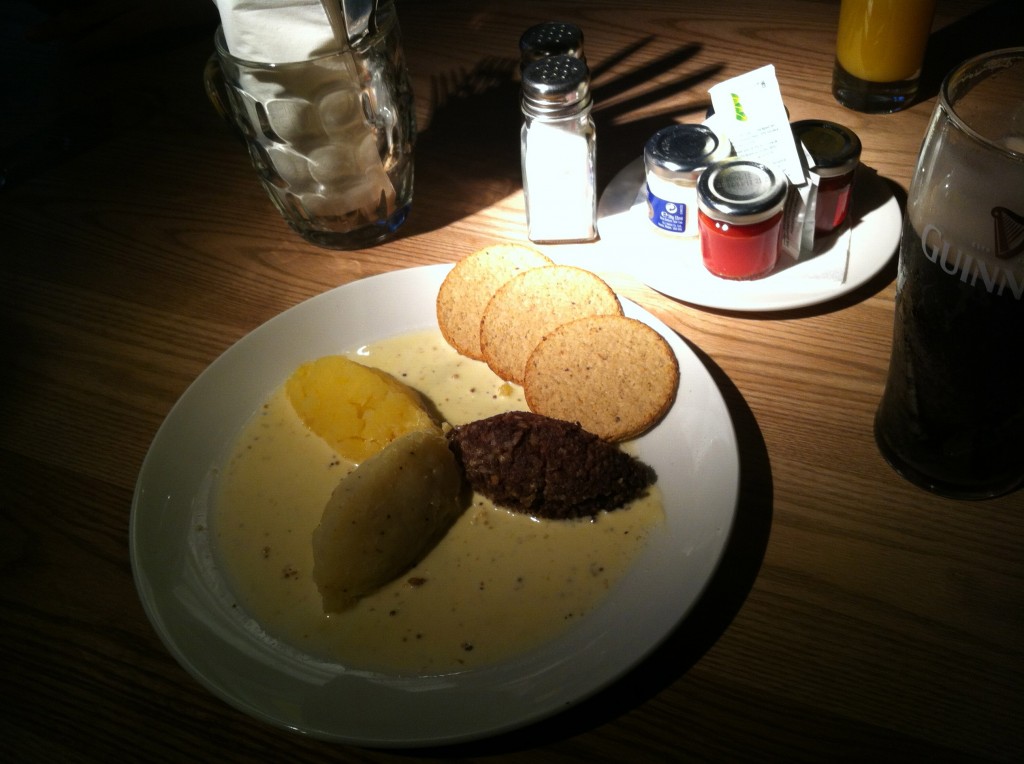
It tastes even BETTER than it sounds! I washed it down with a Guinness, the right way to start and end any day. We had a relaxed dinner as I told stories of my travels thus far.
I suggested an early night, as we were all tired from our respective traveling, and there was more to come tomorrow.
